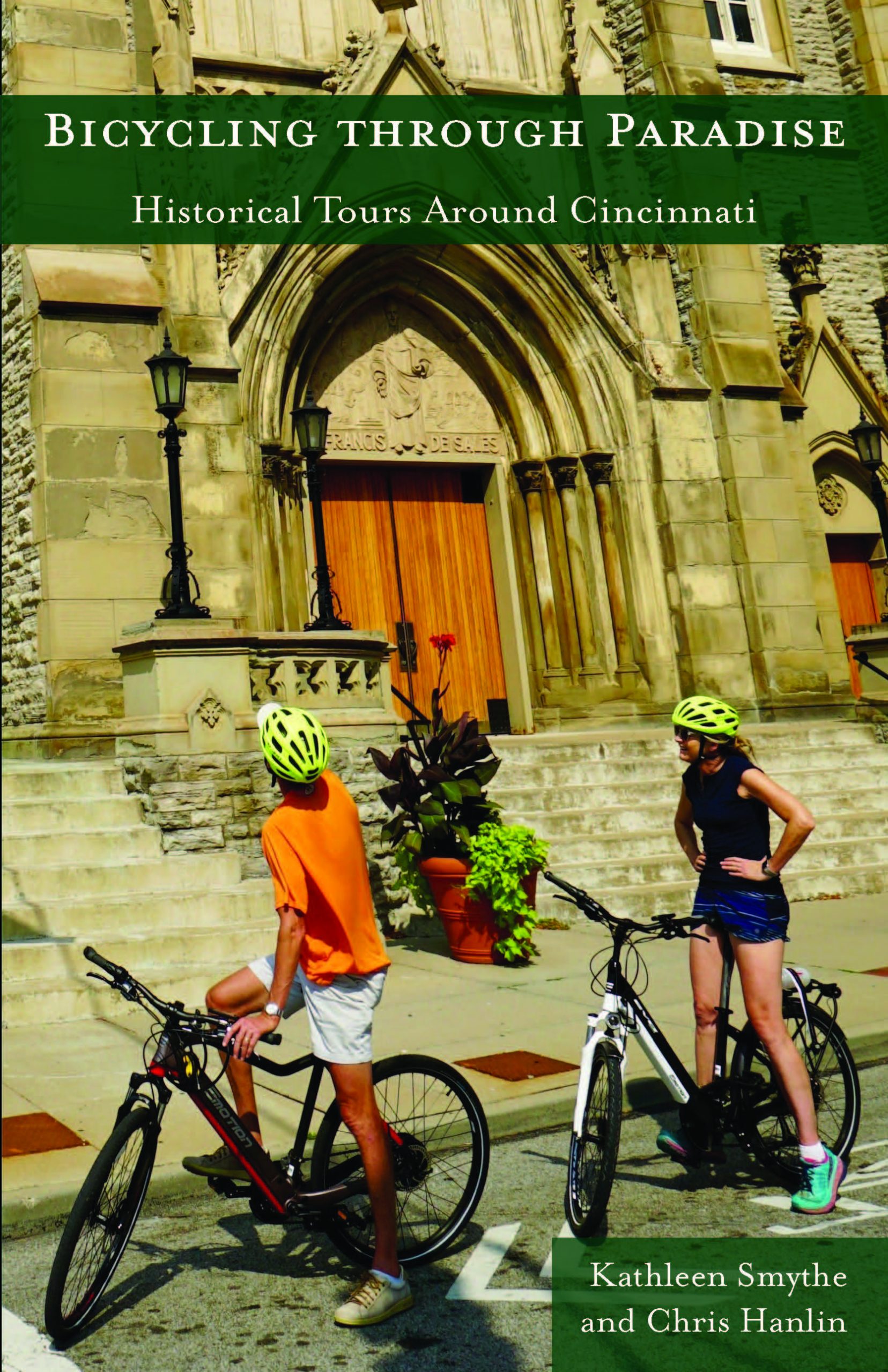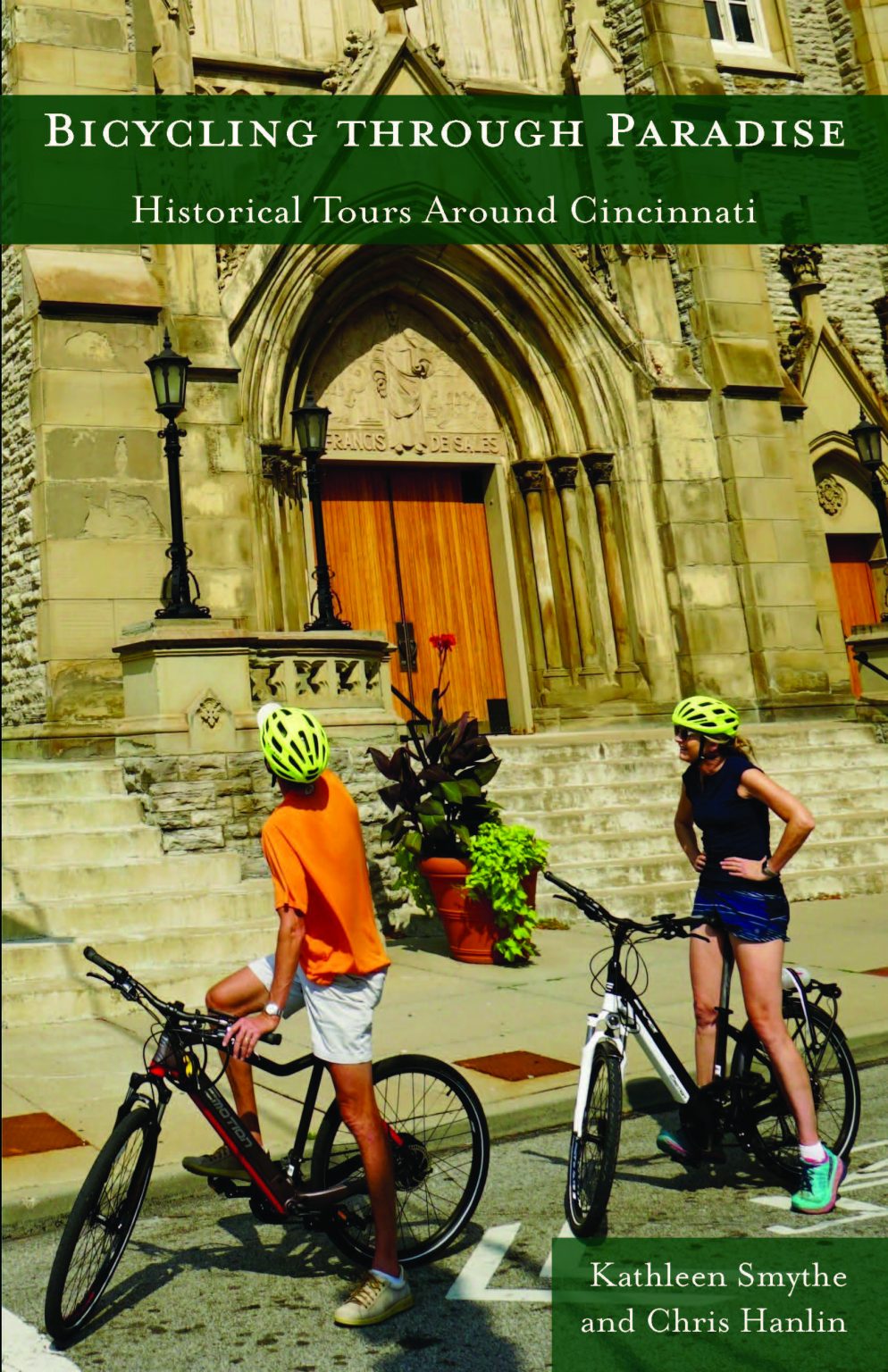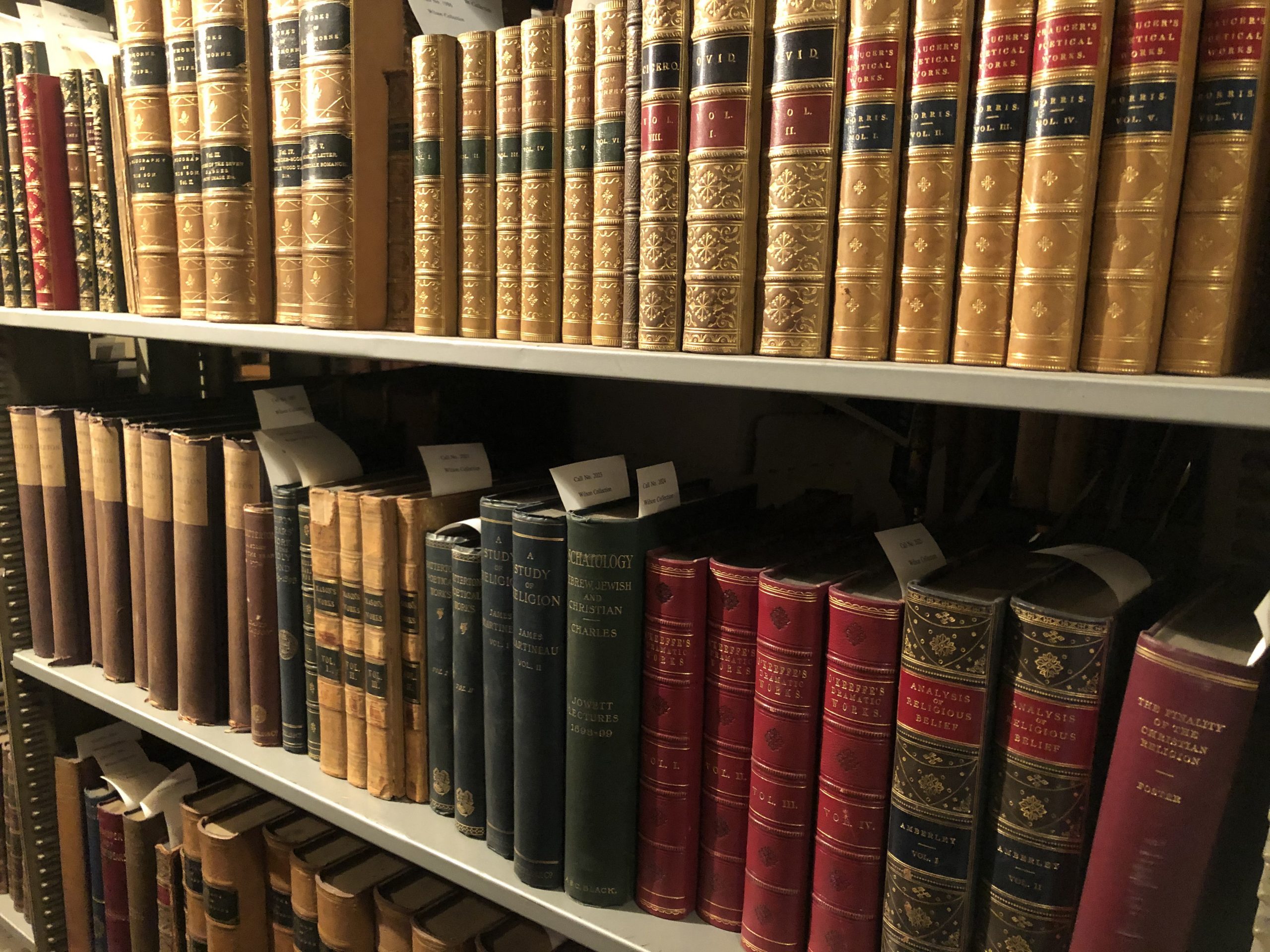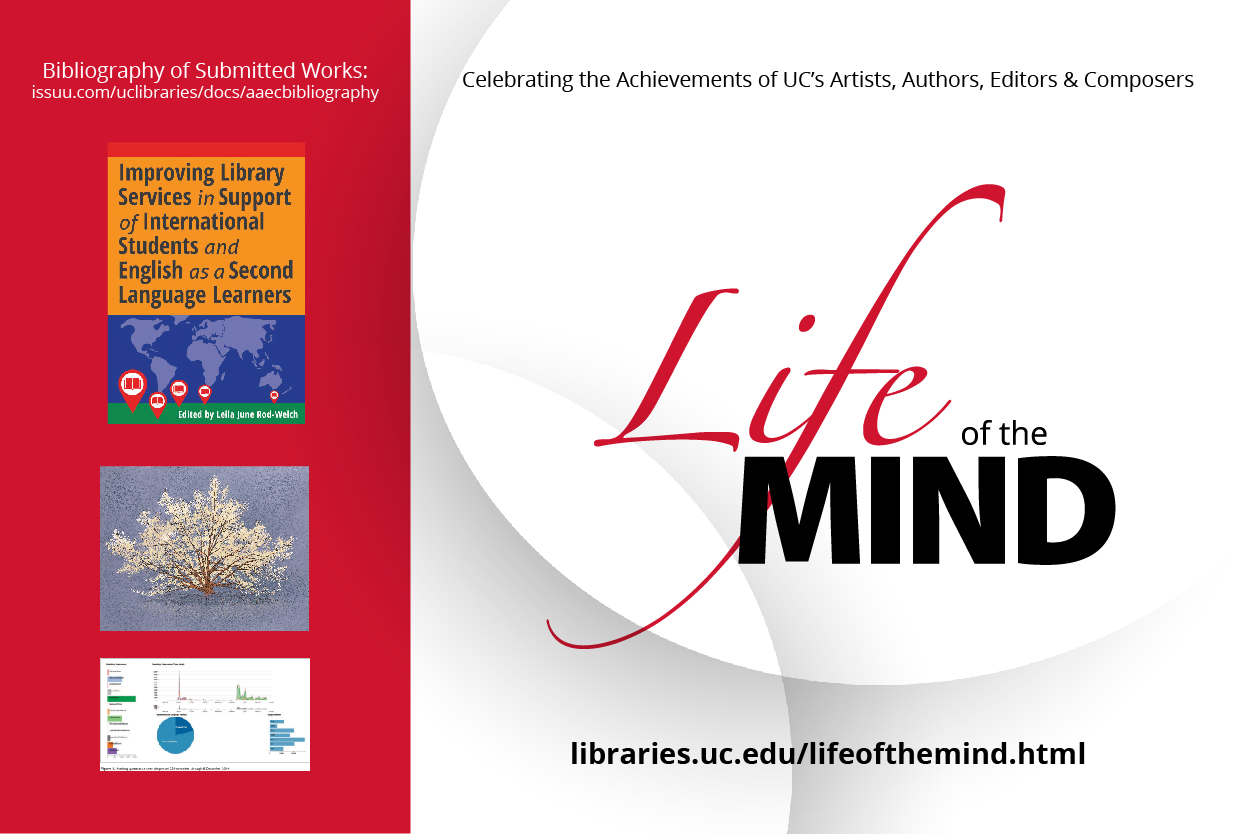
A Conversation with Authors Chris Hanlin & Kathleen Smythe
By Madison Ashley, marketing associate for the University of Cincinnati Press

The University of Cincinnati Press director and acquiring editor Elizabeth Scarpelli and marketing associate Madison Ashley sat down with the authors of Bicycling Through Paradise: Historical Tours Around Cincinnati to chat about their new publication. Authors and Cincinnati residents Kathleen Smythe and Chris Hanlin have both been avid bike riders for over 25 years. Their recently published book is designed for all levels of cyclists and goes beyond typical cycling guides exploring the historical importance of 19 trails in the greater Cincinnati area. The book features a companion online platform that hosts maps and cycling community comments. This interview explores the innovative online features, the road to publishing with the Press and the genesis of an out-of-the-box book.
Q: Why did you decide to write this book?
A: There are a lot of amazing and beautiful small, quaint towns in and around Cincinnati. We wanted to call people’s attention to the historical sites and beautiful landscapes that are passed along these trails.
Q: How did you arrive on the title Bicycling Through Paradise?
A: “Paradise” is discovered externally, but can also be created internally. You can discover so much by just getting out there, but it is party created within you. There are different layers to the idea of paradise and the idea of what it means to bicycle through paradise.
There is a chapter entitled “Bicycling Through Paradise” that talks about Mariemont, Ohio, a planned community founded in the 1840s as a socialist commune. If you take the entire 83-mile tour that heads south of there, it eventually ends up at the Oho River. Along your way, you go through places called Harmon Hill and Felicity. You eventually get to a little town called Utopia.
Q: How did the authors meet?
A: Kathleen Smythe is a history professor at Xavier University and teaches the “Bicycling our Bioregion” course. It is an interdisciplinary seminar that focuses on sustainability and historical issues. Co-author Chris Hanlin audited her course. Smythe had an idea about writing a book and Hanlin was pleased to join her in the journey.
Q: How did you get involved with the University of Cincinnati Press to publish this book?
A: It was Kathleen’s idea. She submitted it to the Press for consideration and director Liz Scarpelli came to Xavier to meet. We then showed her our big map of all the routes and talked about our vision. Liz was very receptive to the concept of creating an historical cycling book. The Press was open to doing something that hadn’t been done before.
Q: Liz, how did the Press decide Bicycling Through Paradise would be a good fit to publish?
A: From a personal standpoint, I love travel. Combining historical facts of the things the cyclists would pass along the way immediately piqued my interest. I was also interested in finding a project that we could make highly interactive. Cyclists, unlike other travelers, tend to be very community oriented. There is already a very strong a community of cyclists in Cincinnati and this book caters to their interests, unlike a general travel book.
After peer review, I shared it with the faculty advisor board and they loved it. We were fortunate to have an avid cyclist on the board, College-Conservatory of Music (CCM) professor of music Steve Meyer who served as one of our three peer reviewers. The board thought the project was unique and in Dr. Meyers peer review he stated that the authors captured a deep sense of the surroundings and history that cyclists would love.
Q: Liz, can you tell us a bit about the interactivity of the book?
A: It was a bit of a case of “building the bicycle while you’re riding.” I had a vision of keeping the book fresh, up to date and dynamic and wanted to invite the cycling community to join the post-publication update process. I knew we wanted to accomplish this through our open access platform Manifold. I enlisted Amy Koshoffer, assistant director of research and data services in UC Libraries, to help us identify a way to bring the maps online. Among her specialties are GIS support for ARCGIS and QGIS Data Sharing and Curation. I told them my general goals and asked their suggestions. Amy recommended and taught us how to use the Arcgis – StoryMaps software, which allowed us to combine GIS technology, mapping and narrative, images and videos. I realized this would be a great way to enhance the book and give the cycling community a different experience.
Travel books are not as popular as they once were due to the ubiquity of the internet. StoryMaps books allow us to keep a curated quality of information, but marry it with the technology that is available. The Press’s technical publishing co-op 2.0 student intern Luke Beckwith, a CCM fourth year minoring in IT, learned StoryMaps and created the 19 online turn-by-turn routes for the book. He has become our in-house expert on StoryMaps and spent several months working closely with Chris and Kathleen to design the maps’ look to showcase their beautiful photos and to provide further context to all the points of interest along the trails. Alex Nash, Press editorial assistant and Arts & Sciences master’s student in public administration, worked with Luke and the authors to organize spreadsheets with thousands of lines of latitude and longitude points, images and text/long points that went into the final product. This is a great example of our collaborative efforts with authors. The goal was to engage readers with more vivid media and inspire further exploration of the geography it covers.
Q: Authors, in your opinion, how do the StoryMaps enhance the book?
A: It helps us craft the whole project to appeal to all levels of cyclists. Having the book paired with Manifold allows us to give a brief description in the book then write about the history, while keeping the rest of the route information on the website where it can be updated and inspire dialog and commenting in real-time. It allows the riders to have more information that we could have provided in a standalone book and offers infinite flexibility.
Q: How has your experience been working with the University of Cincinnati Press?
A: It’s been great! The best part has been the process of creating the Manifold features. The creation process, including the back and forth of all the details, was excellent. Luke and Alex did a great job with the entire process of building the StoryMaps. It was an intensely collaborative project and we are thrilled with the results.
Q: Is this book only for advanced cyclists and people already established within the cycling community in Cincinnati?
A: The routes are broken down into individual segments of ten miles a piece. We wanted those segments to start and stop in places with parking, food and bathrooms. Twenty miles is relatively easy to do even for novice cyclists. It’s even ideal for those who don’t ride. We wanted the essays in the book to stand on their own and be interesting to read even if the reader isn’t riding the routes. We wanted to also capture the armchair explorers and people that drive the routes. It has stand-alone elegance paired with the turn-by-turn directions online to accommodate all levels and readers. We had the idea of a web component and Liz was able to expand that idea and make the web experience a more significant part of the project. That aspect turned out to be a much more powerful component than we initially realized.
Q: What is your advice to beginner cyclists?
A: A point we wanted to make is that you can ride longer than you think! Get outside and give it a shot. I’ve been riding for 25 years, and I am not as strong a cyclist as I once was, but these days an ideal ride now is 20 or 30 miles. When I was younger an ideal ride was 40 to 60 miles. That is why I wanted to be sure we crafted something that would work for different levels of cyclists.
I recommend the Little Miami Scenic Trail (formerly the Loveland Bike Trail.) It now is a part of the Ohio to Erie trail that goes all the way from Cincinnati to Cleveland. It follows an old rail bed, so it is flat and shady. That is always a go to, but we wanted to show readers that there are other trails besides that in this region that are ideal for beginners. We wanted to share things along these routes that might be a block or two off but expand the understanding of the region and be interesting stops. We have specific stories we wanted to tell, for example, a lot of people know about the Shaker Trace Bike Trail, but there is an actual Shaker village less than a half a mile north of the bike trail.
Q: What is your favorite part of the book and favorite route in the book?
A: That is such a hard question, says Chris. One of my favorite chapters in the book is “Homeland Insecurity” and it’s a great ride but very hilly. It’s not an ideal ride for everybody, but I love it.
Kathleen Smythe is currently on a cross-county bike ride with a group of cyclists called Ohio Wanderers. She is riding from Oregon to Omaha. Her trek will encompass over 2,000 miles and will last a month. So far, her longest day has been 97 miles with well over 3,000 ft. of vertical climb and 4,000 ft. of descent. With the current weather, the maximum single day temperature so far has been 107 degrees.
The University of Cincinnati Press wants everyone to get out and explore new places on these prepared tours. Through July 31, Source readers can purchase Bicycling Through Paradise at a 40% discount using the promo code: BTP40S on the Press web site. You must order directly through the Press Buy button to obtain the discount.
Check out the StoryMaps and Open Access sample chapters on our Manifold Page. The Press publishes books on Ohio, social justice, education and community academic partnership, as well as journals edited by faculty at UC. To learn about new publications, subscribe online.



